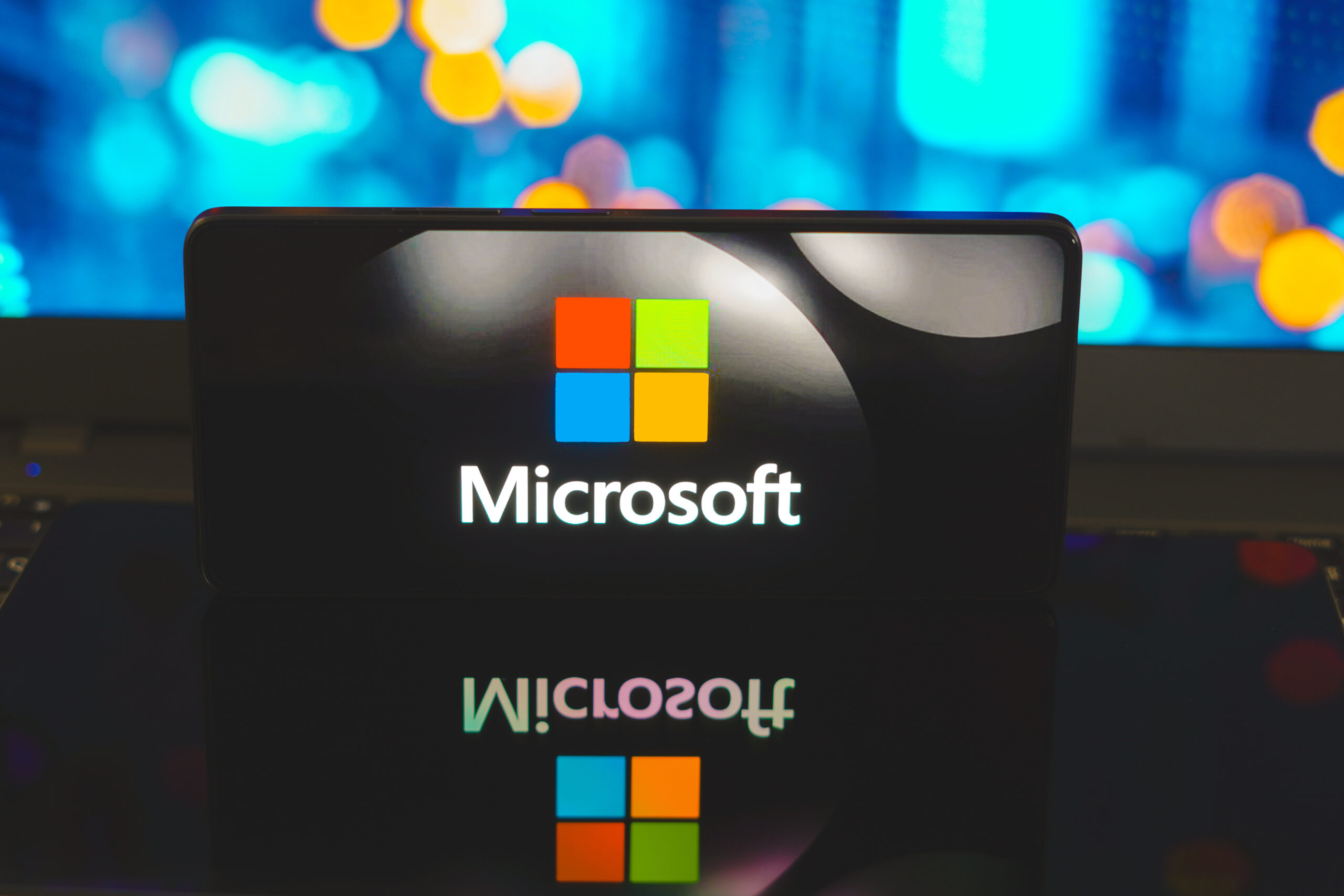Microsoft has successfully demonstrated operations using multiple error-corrected qubits, a milestone that propels the field toward practical quantum computing computers. This advancement holds the potential to reshape industries across the board, from enhancing cryptographic security to accelerating drug discovery. By addressing one of quantum computing’s most persistent challenges—qubit instability—Microsoft has opened new avenues for exploration and innovation. In this article, you’ll discover the implications of this technological leap and how it positions Microsoft at the forefront of quantum research. Prepare to explore the future of computing as we unravel the significance of this multi-qubit error correction breakthrough.
Microsoft’s Major Milestone in Quantum Computing

Microsoft’s recent breakthrough in quantum computing represents a significant leap forward in the field. By successfully demonstrating operations using multiple error-corrected qubits, the tech giant has overcome a major hurdle in the quest for practical quantum computers.
Understanding the Significance of Quantum Computing with Microsoft
- Error correction is crucial in quantum computing due to the fragile nature of quantum states. Microsoft’s achievement in implementing multi-qubit error correction brings us closer to realizing quantum computers that can perform complex calculations reliably. This milestone paves the way for more stable and scalable quantum systems.
Potential Impact on Industries with Microsoft Improvements on Quantum Computing
The implications of this advancement are far-reaching. Quantum computers have the potential to revolutionize various sectors:
Cryptography: Enhancing encryption methods and potentially breaking current encryption standards
Material Science: Simulating molecular structures for new materials and drug discovery
Financial Modeling: Optimizing portfolio management and risk assessment
Climate Modeling: Improving weather forecasting and climate change predictions
Looking Ahead
- While Microsoft’s breakthrough is a significant step, challenges remain in scaling up quantum systems and improving their reliability. However, this milestone signals a promising future for quantum computing, bringing us closer to unlocking its transformative potential across industries.
How Error Correction Enables Practical Quantum Computers Using Microsoft
The Challenge of Quantum Noise
- Quantum computers hold immense potential, but they face a significant hurdle: quantum noise. This interference can cause errors in calculations, limiting the reliability and scalability of quantum systems. Without error correction, quantum computers would struggle to perform complex, real-world tasks effectively.
The Role of Error Correction
- Error correction techniques are crucial for mitigating the effects of quantum noise. By implementing sophisticated algorithms and redundant qubits, quantum computers can detect and correct errors as they occur. This process allows for longer coherence times and more accurate computations, paving the way for practical quantum applications.
Implications for Quantum Computing
- Microsoft’s breakthrough in multi-qubit error correction represents a significant milestone. This advancement brings us closer to realizing fault-tolerant quantum computers capable of solving problems beyond the reach of classical systems. As error correction techniques improve, we can expect to see quantum computers tackling increasingly complex challenges in fields such as cryptography, drug discovery, and financial modeling.
By addressing the fundamental issue of quantum noise, error correction enables the development of more powerful and reliable quantum systems. This progress is essential for unlocking the full potential of quantum computing and its transformative impact across various industries.
The Challenge of Qubit Errors and Decoherence in Quantum Computing
Quantum computing holds immense promise, but it also faces significant hurdles. One of the most formidable challenges is the issue of qubit errors and decoherence, which threatens to undermine the very foundations of quantum computation.
Understanding Qubit Fragility in Quantum computing
- Qubits, the fundamental units of quantum information, are incredibly delicate. Unlike classical bits, which maintain stable states of 0 or 1, qubits exist in a superposition of states. This quantum property is both their strength and their weakness. Environmental factors such as temperature fluctuations, electromagnetic interference, or even slight vibrations can cause qubits to lose their quantum properties, a phenomenon known as decoherence.
The Race Against Time
- Decoherence occurs rapidly, often within microseconds or milliseconds. This presents a significant challenge for quantum computations, which rely on maintaining quantum states for extended periods. Scientists and engineers are in a constant race against time, striving to perform complex calculations before qubits succumb to errors or lose their quantum nature.
Error Correction: A Quantum Necessity
- To combat these issues, quantum error correction techniques are crucial. These methods aim to detect and correct errors without disturbing the quantum state. However, implementing effective error correction is a monumental task, requiring multiple physical qubits to represent a single logical qubit. Its breakthrough in multi-qubit error correction represents a significant step forward in addressing this fundamental challenge, potentially paving the way for more stable and scalable quantum computing systems.
Microsoft: New Error-Corrected Qubit Design in Quantum Computing
Microsoft’s groundbreaking advancement in quantum computing hinges on its innovative error-corrected qubit design. This novel approach addresses one of the most significant challenges in quantum computing: maintaining qubit stability and reducing errors that can compromise calculations.
Logical Qubits: The Foundation of Error Correction
- At the heart of Microsoft’s design are logical qubits, which are composed of multiple physical qubits working in tandem. This redundancy allows the system to detect and correct errors that may occur in individual qubits, significantly enhancing the overall stability and reliability of quantum operations.
Topological Quantum Computing with Microsoft
- Microsoft’s approach leverages topological quantum computing, a method that exploits the unique properties of certain exotic quantum states. This technique offers inherent error protection, making the qubits more resilient to environmental disturbances and reducing the need for extensive error correction protocols.
Microsoft Quantum Computing Scalability and Future Prospects
- The success of Microsoft’s multi-qubit error correction represents a crucial step towards scalable quantum computers. By demonstrating the ability to perform operations on multiple error-corrected qubits simultaneously, Microsoft has opened the door to more complex quantum algorithms and real-world applications. This breakthrough could accelerate the development of practical quantum computers, potentially revolutionizing fields such as cryptography, drug discovery, and financial modeling in the coming years.
The Future of Quantum Computing After Multi-Qubit Error Correction in Microsoft
Accelerating Quantum Innovation
- Microsoft’s breakthrough in multi-qubit error correction marks a pivotal moment in the quantum computing landscape. This advancement paves the way for more stable and reliable quantum systems, potentially accelerating the development of practical quantum computers. As error rates decrease, researchers can focus on scaling up qubit counts and improving quantum algorithms, bringing us closer to quantum supremacy.
Transformative Applications on the Horizon
- With more robust quantum systems, we can expect significant progress in various fields. In cryptography, quantum computers could potentially break current encryption methods, necessitating the development of quantum-resistant cryptography. Material science might see a revolution in the discovery of new compounds, while the financial sector could benefit from enhanced risk analysis and portfolio optimization. Additionally, quantum simulations could lead to breakthroughs in drug discovery and climate modeling.
Challenges and Opportunities
- Despite this milestone, several hurdles remain. Scaling up error-corrected qubits, improving coherence times, and developing quantum-specific software are key challenges. However, these obstacles also present opportunities for innovation and collaboration across academia and industry. As quantum technology advances, we may see the emergence of new quantum-focused startups and increased investment in quantum education and workforce development.
In Conclusion
Microsoft’s breakthrough in multi-qubit error correction represents a pivotal moment in the quantum computing landscape. This achievement not only demonstrates the company’s technical prowess but also brings us closer to the reality of practical, large-scale quantum computers. As research in this field continues to accelerate, you can expect to see more groundbreaking developments that will reshape our technological capabilities. The potential applications across various industries are vast and exciting, promising to unlock solutions to complex problems previously deemed unsolvable. Stay tuned as we enter a new era of computing power that could fundamentally alter our approach to scientific discovery and innovation.
More Stories
KT Cloud Accelerates Digital Growth with New High-Tech Data Center in Yecheon-Gun
KT Cloud new data center in Yecheon-gun marks a key public-private effort with Gyeongsangbuk-do and Yecheon County.
Microsoft Cloud Momentum Fuels AI Growth Across Indonesia and Malaysia
Microsoft Cloud services expands strategically into Indonesia and Malaysia to reshape Southeast Asia’s technological landscape.
Roblox Farming Craze Fuels Surging App Store Economy
As you dive into the dynamic world of digital economies, one phenomenon stands out: the Roblox farming craze. This surge,...
NVIDIA Powers Up: Revolutionizing AI Data Centers with 800V HVDC Systems
NVIDIA emerges as a pioneer, revolutionizing the backbone of AI data centers through its cutting-edge 800V high-voltage direct current (HVDC) systems.
Bluesky Reinvents the Blue Check: A Decentralized Take on Digital Trust
In an era where digital trust is critical yet fragile, Bluesky offers a bold new approach to online verification. Bluesky...
Confluent Unifies Real-Time and Historical Data to Power Next-Gen AI and Analytics
Confluent has made major progress by upgrading its Confluent Cloud platform. These enhancements aim to unify data streams for advanced AI applications.


